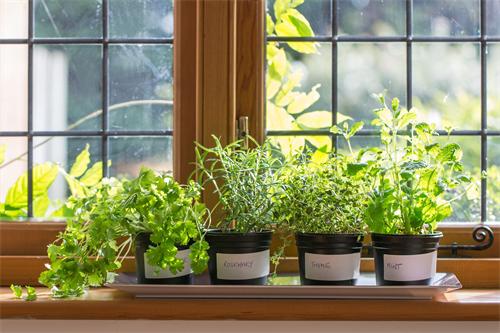
Enjoying fresh, homegrown herbs is easier than you think. By selecting compact, versatile varieties and giving them just a few hours of daily sunshine, you can nurture a thriving mini-garden right on your windowsill. In this essay, we’ll explore why windowsill herb gardening is so rewarding, introduce the top eight compact herbs ideal for tight spaces, outline essential care tips, and suggest creative ways to elevate your cooking—and your space—with these fragrant greens.
Why Windowsill Herb Gardening Matters?
Windowsill herb gardening brings the outdoors into your home, brightening your kitchen with lush greenery and invigorating scents. Unlike larger vegetable gardens, a small herb collection requires minimal space and effort, making it perfect for apartment dwellers, busy professionals, and anyone new to gardening. Beyond aesthetics, growing your own herbs offers fresh flavors that supermarket bunches simply can’t match, reducing waste and giving you instant access to nutrient-packed ingredients. Moreover, the act of caring for living plants can be deeply satisfying, offering a moment of calm as you water, prune, and watch your herbs flourish.
Top Eight Compact Herbs for Your Kitchen
1. Basil (Ocimum basilicum)
Basil’s glossy leaves and sweet, peppery aroma make it a kitchen staple. Compact varieties such as ‘Spicy Globe’ stay under 8 inches tall, perfect for a small pot. Harvest leaves regularly to promote bushier growth, and enjoy fresh pesto or garnish caprese salads in seconds.
2. Thyme (Thymus vulgaris)
This hardy herb thrives in shallow containers. Its woody stems yield tiny, fragrant leaves ideal for seasoning meats, stews, and vegetables. Dwarf cultivars like ‘Minimus’ maintain a tidy footprint, needing only moderate sunlight and well-draining soil.
3. Chives (Allium schoenoprasum)
Chives form neat clumps of slender, onion-flavored blades. They grow vigorously but remain compact if you snip them frequently. Use fresh chives to top baked potatoes, omelets, and creamy soups, or let a few blossoms bloom for an edible pop of color.
4. Mint (Mentha spicata)
Although mint can be invasive outdoors, its tendency to spread makes it ideal for container life. Varieties like ‘Pineapple’ or ‘Chocolate’ mint stay relatively small and add a refreshing note to beverages, salads, and desserts. Position your mint pot in partial shade to prevent leggy growth.
5. Parsley (Petroselinum crispum)
Flat-leaf parsley offers bright, slightly peppery flavor and a decorative touch to dishes. The ‘Italian’ variety remains surprisingly compact when grown in fertile, moist soil. Harvest outer stems first to encourage continuous production.
6. Oregano (Origanum vulgare)
Oregano’s bold, earthy taste is indispensable in Mediterranean and Mexican cooking. Dwarf types such as ‘Hot & Spicy’ reach just 6–8 inches high and reward you with richly scented leaves. Allow soil to dry slightly between waterings to mimic its natural Mediterranean habitat.
7. Rosemary (Rosmarinus officinalis)
While some rosemary varieties become woody shrubs, cultivars like ‘Blue Boy’ stay under a foot tall. Their needle-like leaves infuse roasted meats and breads with piney warmth. Provide bright light and well-draining soil, and prune tips to maintain shape.
8. Sage (Salvia officinalis)
Compact sages such as ‘Purpurascens’ boast beautiful foliage and intense flavor. Its silvery leaves need plenty of sun and moderate moisture. Sage complements rich dishes—try it crisped in butter for a fragrant garnish.
By embracing these eight compact herbs, you can cultivate a vibrant, functional garden on even the narrowest windowsill. With minimal space and effort, you’ll enjoy fresh flavors, uplifting greenery, and the simple pleasure of nurturing living plants. Whether you’re a seasoned gardener or a curious beginner, this small-scale kitchen garden is sure to inspire both delicious meals and renewed enthusiasm for indoor gardening.
Recommend:

Why do dogs tilt their heads to one side?

The Spectacular Dance of Aurora: Best Places to Witness the Northern Lights

Here’s the real reason why pill bottles are orange

10 Things to Do in Göreme, Cappadocia, Turkey

